


Alum refers to a collection of chemical compounds that are hydrated sulfate salts of aluminum and usually one other metal.
A solid combination of chlorine and slaked lime. It had the same effect as chlorine and could be more easily handled


Diammonium phosphate is one of a series of water-soluble ammonium phosphate salts that can be produced when ammonia reacts with phosphoric acid.
Ferric chloride describes the inorganic compounds . Used in the largest application of sewage treatment and drinking water production.


Hydrochloric acid, also known as muriatic acid or spirits of salt, is an aqueous solution of hydrogen chloride. It is a colorless solution with a distinctive pungent smell. It is classified as a strong acid
Poly Aluminium Chloride is a highly efficient water treatment chemical where it works as a coagulant to extract and clump together contaminants, colloidal and suspended matter. This results in the formation of floc (flocculation) for removal via filters.


They are thus often used as thickeners, emulsifiers, conditioners, clarifying agents, and even drag reducers.They are used in water treatment and for oil recovery.
Sodium hypochlorite (NaOCl) is a solution made from reacting chlorine with a sodium hydroxide solution. commonly referred to as bleach, has a variety of uses and is an excellent disinfectant/antimicrobial agent.


Sodium chlorite is an inorganic sodium salt in which chlorite is the counterion. It has a role as an oxidising agent. It is an inorganic sodium salt and a chlorite salt. ChEBI. Used as an agent for cleaning drinking water.
Sodium dichromate is mainly used as a chemical intermediate in the production of other chromium compounds. It is also used in the production of dyes, as a bleaching agent and a corrosion inhibitor. In the past sodium dichromate was used in wood preservatives.
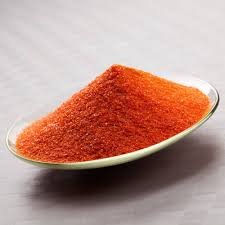
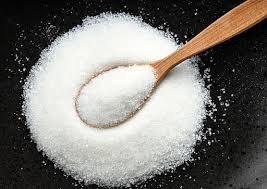
Sodium sulfite is an odorless, solid white powder with a salty sulfurous taste that is soluble in water. It is primarily used as a food preservative (e.g., to prevent dried fruit from discoloring) and as an antioxidant.
Sodium Bisulfite is a white, crystalline solid with a slight odor of rotten eggs. It is often in a liquid solution. It is used in making paper and leather, as a food preservative and in dye and chemical production.


Sodium meta Bisulfite is used as an antioxidant agent in many pharmaceutical formulations. It is extensively used as a food preservative and disinfectant. It has been demonstrated that sulphite exposure can affect some organs.
Granules are larger, harder and more resistant to moisture. As a result, granulated urea has become a more suitable material for fertilizer blends. You can apply urea to soil as a solid, solution or, for certain crops, a foliar spray.


PolyDADMAC is used as a coagulant in water purification. It is effective in coagulating and flocculating inorganic and organic particles such as silt, clay, algae, bacteria and viruses.
pH booster is an alkaline liquid formulation designed to increase alkalinity of feed water of boiler. It is also used to reduce corrosion of feed water tank,lines & pump.


RO Antiscalant is a pretreatment water additive for reverse osmosis system that is highly effective in preventing the membranes from scaling. Before the feed water enters the reverse osmosis membrane, an antiscalant is injected into the water and sent the through the system.
Fuel additives and fireside chemicals are a formulation of combustion catalysts, dispersants, oxidising agents, propellants and oxidisers in balanced quantities that helps in ensuring proper combustion, reduction in clinker formation, increase in heat transfer and reduction in corrosion.
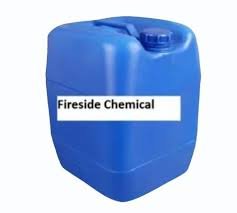

An antiscalant is a pretreatment that gets injected into the feedwater that flows through the RO membrane, preventing the membrane from scaling. RO membrane scaling occurs when particles accumulate on a membrane, causing the membrane’s pores to plug.
Resins have the widest application areas. From paints and coatings, Personal Care & Home Care, pharma, rubber, plastics and it’s coatings, making electrical and jewelry articles, decorative items, wood coatings etc.

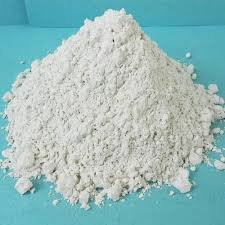
This is used for drying of poultry waste, fixing tiles and neutralization of acidic effluent. These products are processed using premium quality basic ingredients and the latest technology under the supervision of our highly skilled professionals.
hydrated lime, a mild alkali, is used for the removal of acid gases in coal-fired energy plants, cement mills, glassmakers and incinerators. However, the largest single use of hydrated lime remains steel manufacturing, where it is used to remove impurities.

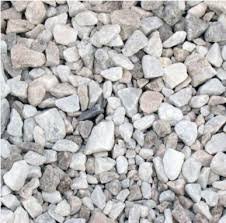
Limestone Chips are widely use in a lot of industries for processing, acid neutralization, fertilizer industry, preparation of calcium chloride and other chemicals & in poultry feed.
As such, powdered limestone is used in the textile, paint, paper, rubber, glass and plastic industries amongst others. They are mostly used as fillers. Apart from this, it is used in the steel industry for the production process where limestone is used to remove impurities.


Quick lime is used in the manufacture of iron and steel, and paper and pulp. A combination of phenolphthalein and calcium oxide is used in water detection pastes. Used in making porcelain and glass. In preparation of bleaching powder, calcium carbide, and calcium cyanamide.
Acetic acid is used in the manufacture of acetic anhydride, cellulose acetate, vinyl acetate monomer, acetic esters, chloracetic acid, plastics, dyes, insecticides, photographic chemicals, and rubber.
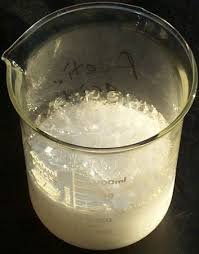

The primary use of an Acid Slurry (LABSA) is to produce cleaning agents such as detergent powders and cleaning soaps. The Acid Slurry provides a sulphonic agent that affects the water. That is why Acid Slurry is being used in various cleaning products.
It helps the body make collagen, an important protein used to make skin, cartilage, tendons, ligaments, and blood vessels. Vitamin C is needed for healing wounds, and for repairing and maintaining bones and teeth. It also helps the body absorb iron from nonheme sources.
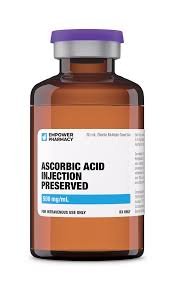
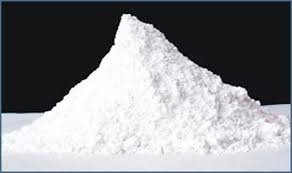
The different shapes allow PCC to act as a functional additive in sealants, adhesives, plastics, rubber, inks, paper, pharmaceuticals, nutritional supplements and many other demanding applications.
It is used in fertilizers as a nitrogen source.It is used in medicine (especially in cough medicine) as an expectorant.It is used in glue which helps to bond plywood.It is used in Leclanche cells in aqueous solutions.

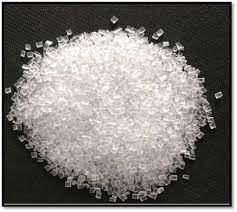
Ammonium Sulfate is used as a reagent for molecular biology as it is a good precipitant agent for proteins. Ammonium Sulfate is recognized as a food additive. It is also used as an acidity regulator in flours and bread. Ammonium Sulfate is used in the treatment of drinking water.4 days ago
The main uses of bentonite are in drilling mud and as a binder, purifier, absorbent, and carrier for fertilizers or pesticides. As of around 1990, almost half of the US production of bentonite was used as drilling mud.

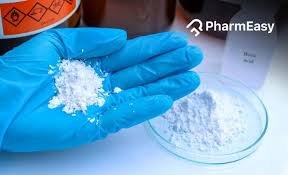
Boric acid is used as a fireproofing agent for wood, as a preservative, and as an antiseptic. It is used in the manufacture of glass, pottery, enamels, glazes, cosmetics, cements, porcelain, leather, carpets, hats, soaps, artificial gems, and in tanning, printing, dyeing, painting, and photography.
Calcite Powder is extensively utilized as a filler in the manufacturing of plastics owing to its low oil absorption, high dispersibility, smooth surface finish, high impact resistance, easy processing, unmatched dimensional stability, and its compatibility with other complex polymers and organic additives.
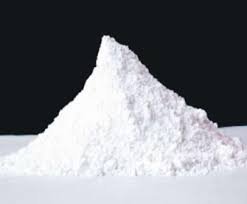

It is used to prevent ice formation and therefore used in deicing. Used in the production of activated charcoal. Used as a sterilant for male animals. It is used in heating pads and self-heating cans.
Calcium acetate is used to control high blood levels of phosphorus in people with kidney disease who are on dialysis (medical treatment to clean the blood when the kidneys are not working properly). Calcium acetate is in a class of medications called phosphate binders.


Caustic soda flakes are used in a variety of industrial applications which include: They are used in cotton making, alcohol production, leather production, paper production, soap and detergent production, as well as in the textile industry to dye nylon and polyester.
Caustic potash is a typical strong alkaline substance made by electrolyzing aqueous solution of potassium chloride. It is widely used in many areas such as alkaline batteries, pharmaceuticals, cosmetics, various potash salts, detergents, and food additives.


Citric acid is used in food as a flavouring agent and preservative. It is used in processed food products like beverages, soft drinks etc. Due to its sour taste, it is used in making certain candies. Sometimes the sour candy is covered with white powder which is citric acid.


Cobalt dichloride is a cobalt salt in which the cobalt metal is in the +2 oxidation state and the counter-anion is chloride. It is used as an indicator for water in desiccants. It has a role as a two-colour indicator, an allergen, a calcium channel blocker and a sensitiser.
Cobalt sulfate is used in electroplating baths, storage batteries, sympathetic inks, and as an additive to soils and animal feeds.
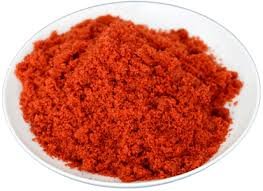

Dolomite is used as a source of magnesium metal and of magnesia (MgO), which is a constituent of refractory bricks. Dolostone is often used instead of limestone as an aggregate for both cement and bitumen mixes and also as a flux in blast furnaces.
Distilled water can be used for everything from drinking to watering plants to hydroponic farming and food processing. Pure Water Distillers have provided both residential and commercial customers with high-quality water free from chemicals, contaminants, toxins, viruses, and bacteria for over fifty years.

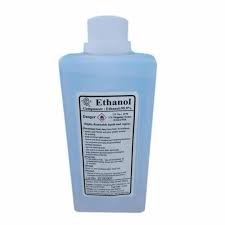
It has medical applications as an antiseptic and disinfectant. It is used as a chemical solvent and in the synthesis of organic compounds. Ethanol is an alternative fuel source
Iron(II) sulfate is a bluish-green chemical that is employed in several applications like manufacturing ink, dye, and medicines.Ferrous sulfate is mostly used in industry as a precursor to other iron compounds


As formalin is dissolved in water, it is used as an industrial disinfectant as well as a preservative in funeral homes and medical laboratories. It’s also a preservative in certain foods and products like antiseptics, medications, and cosmetics.
Crude gypsum is used as a fluxing agent, fertilizer, filler in paper and textiles, and retarder in portland cement. About three-fourths of the total production is calcined for use as plaster of paris and as building materials in plaster, Keene’s cement, board products, and tiles and blocks.


Hydrogen peroxide is a mild antiseptic used on the skin to prevent infection of minor cuts, scrapes, and burns. It may also be used as a mouth rinse to help remove mucus or to relieve minor mouth irritation (such as due to canker/cold sores, gingivitis).
Isopropyl alcohol is mixed with water for use as a rubbing-alcohol antiseptic. It is also used in aftershave lotions, hand lotions, and other cosmetics. In industry it is used as an inexpensive solvent for cosmetics, drugs, shellacs, and gums, as well as for denaturing ethanol (ethyl alcohol).
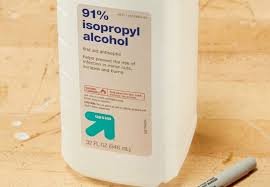

Magnesium is used in products that benefit from being lightweight, such as car seats, luggage, laptops, cameras and power tools. It is also added to molten iron and steel to remove sulfur. As magnesium ignites easily in air and burns with a bright light, it’s used in flares, fireworks and sparklers.


Magnesium sulfate is a magnesium salt having sulfate as the counterion. It has a role as an anticonvulsant, a cardiovascular drug, a calcium channel blocker, an anaesthetic, a tocolytic agent, an anti-arrhythmia drug, an analgesic and a fertilizer.
The primary use of ammonium sulfate is as a fertilizer for alkaline soils. In the soil, the ammonium ion is released and forms a small amount of acid, lowering the pH balance of the soil, while contributing essential nitrogen for plant growth.


Nickel chloride is used for nickel plating cast zinc, as an agent in electrolytic refining of nickel, as a chemical intermediate for nickel catalysts and complex nickel salts, as an absorber of ammonia gas in industrial gas masks, as a catalyst in diarylamine and silicon tetrachloride production.
Nitric acid is used for the production of ammonium nitrate, a major component of fertilizers. It is also used for producing explosives like nitroglycerin and trinitrotoluene (TNT) and for oxidizing metals..


Phosphoric acid is used as an acid catalyst in making ethylene and purifying hydrogen peroxide, in the manufacture of chemicals (ethylbenzene, propylene, cumene), as a bonding agent for refractory bricks, in extracting penicillin and as an analytical agent.
Potassium carbonate is widely used for the production of glass and soap. It is also used as a drying agent which is mild in nature. Many wine production processes involve the use of this compound as a buffering agent. Potassium carbonate is also used as a fire suppressant.


KCl is used as a fertilizer, in medicine, in scientific applications, domestic water softeners (as a substitute for sodium chloride salt), and in food processing,
Potassium permanganate is widely used in the chemical industry and laboratories as a strong oxidizing agent, and also as a medication for dermatitis, for cleaning wounds, and general disinfection. It is on the World Health Organization’s List of Essential Medicines.


Used in the iodination of table salt because iodide can be oxidised by molecular oxygen to iodine under wet conditions. Used in the analysis of testing arsenic and zinc. Used in the iodometry in medicine manufacturing.
It is used in table salt as the most common additive. It is used to avoid the loss of iodine due to oxidation from salts. It is used in the treatment of hyperthyroidism. It helps in promoting hormonal balance.


glycol is a useful industrial compound found in many consumer products. Examples include antifreeze, hydraulic brake fluids, some stamp pad inks, ballpoint pens, solvents, paints, plastics, films, and cosmetics.
Salt assists in cleaning gas and oil wells and is an essential component in the manufacture of paper, tires, brass, bleach and case-hardened steel. Salt is part of the caustic soda and chloralkali processes. Industrial salts are often purchased in bulk and in various levels of purity depending on the application.
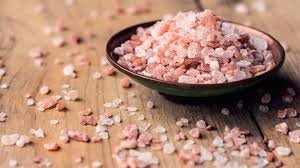

The greatest single use for salt (sodium chloride) is as a feedstock for the production of chemicals. It is used to produce caustic soda and chlorine; it is also used in the manufacturing processes of polyvinyl chloride, plastics, paper pulp and many other products.
It is used in the manufacture of detergents, soaps, and paper. Also used in the manufacture of water glass (sodium silicate), borax, sodium phosphate, and many other sodium compounds. It is used as a water softener – Hard water which consists of magnesium and calcium ions are precipitated by carbonate.


Main uses. Pharmaceutical, bath additive, baking powder, animal food, poultry feed additive, chemical raw material, agrochemical, fire-extinguishing agent, aqueous blast cleaning media, exhaust gas neutralising material, etc
It helps with clearing steam blocks, hot water systems of calcium and rust layers. It also serves as a buffering and complexing agent in electroplating processes. Textile and building industry gets benefited by the chelating ability and non-toxicity of citric acid.

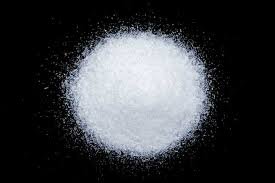
Sulphamic acid is used as an acidic cleaning agent, typically for metals and ceramics. Sulfamic Acid is a replacement for hydrochloric acid for the removal of rust. In households, Sulfamic Acid is often found as a descaling agent in detergents, cleaners and toilet cleaners for the removal of limescale.5hy5
Sulphur powder is also used in the manufacture of fertilizers, rubber vulcanization, medicines and explosives and in the manufacture of other chemicals. Sulphur powder is applied as insecticides in crops like tobacco, rubber, groundnuts, chilies, cumin seeds etc.


Sulfuric acid is also a key substance in the chemical industry. It is most commonly used in fertilizer manufacture but is also important in mineral processing, oil refining, wastewater processing, and chemical synthesis.
Sulfuric acid is also a key substance in the chemical industry. It is most commonly used in fertilizer manufacture but is also important in mineral processing, oil refining, wastewater processing, and chemical synthesis.


Stearic acid is used as a lubricating agent. It is used as a food additive. Used in the production of detergents. It is widely used in cosmetics, soaps, and shampoos.
Trisodium citrate dihydrate is widely used in foods, beverages and various technical applications mainly as buffering, sequestering or emulsifying agent. Trisodium citrate dihydrate occurs as white, granular crystals or as white, crystalline powder with a pleasant, salty taste.


Turkey Red oil is used in agriculture as organic manure, in textiles as surfactants and wetting agents, in paper industry for defoaming, in cosmetics as emulsifiers, in pharmaceuticals as undecylenate, in paints inks and as lubricants.


Trichloroisocyanuric acid is an organic compound with the formula (C3Cl3N3O3). It is used as an industrial disinfectant, bleaching agent and a reagent in organic synthesis. This white crystalline powder, which has a strong “chlorine odour,” is sometimes sold in tablet or granule form for domestic and industrial use.
It acts as a coagulant in the production of rayon. It is used as a preservative for leathers. It is used in zinc electroplating as an electrolyte. It is used as a mordant in dyeing.
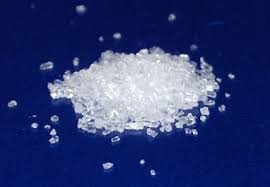

Zinc oxide is a largely inert, white compound which is used very widely as a bulking agent or filler, and as a white pigment. It is found in some rubber, glass and ceramic products, and finds use in the chemical industry as a catalyst. It is also used in paints as a corrosion inhibitor and for mildew control.
Algaecide is to reduce microbiological contamination in raw materials and/or products such as aqueous paints and coatings, polymers, slurries, adhesives, latex and resin emulsions, sizing, caulk, process water, along with specialty industrial products including inks, …

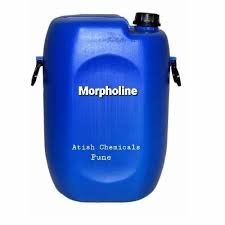
Morpholine is a synthetic organic liquid used mainly as an intermediate in the production of rubber chemicals and optical brighteners, as a corrosion inhibitor in steam condensate systems, as an ingredient in waxes and polishes and as a component of protective coatings on fresh fruits and vegetables.
Sodium sulphate is used to dry organic liquids. As a filler in powdered home laundry detergents. As a fining agent which removes small air bubbles from molten glass. Glauber’s salt, the decahydrate, was used as a laxative which removes certain drugs such as acetaminophen from the body.


Sodium tripolyphosphate (STPP) — is widely used as a component for the production of synthetic detergents, water treatment, as well as in the ceramic, paint, varnish and other industries.